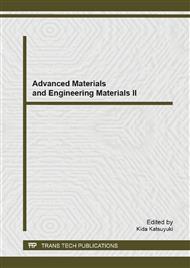p.348
p.353
p.357
p.361
p.366
p.372
p.377
p.381
p.385
Analysis on the Non-Arrhennius Life Prediction Method of Rubber
Abstract:
In the present paper, butadiene rubber is analyzed. The activation energy variation of butadiene rubber material has been studied and found that non-Arrhenius behavior. On this basis, the life prediction model of the rubber sealing material has been established, in which the activation energy is the characterization parameters. The storage lifetime of the conducted rubber seal material has been calculated. Under the same conditions, the storage lifetime are 7 years, while according to the GB the storage life are 20.25 years, with comparing the actual storage of the material life of 3-5 years, could prove more accurate modeling and prediction methods established in this study. This would provide a theoretical basis for more accurate life prediction of rubbers.
Info:
Periodical:
Pages:
366-371
Citation:
Online since:
April 2013
Authors:
Keywords:
Price:
Сopyright:
© 2013 Trans Tech Publications Ltd. All Rights Reserved
Share:
Citation:


